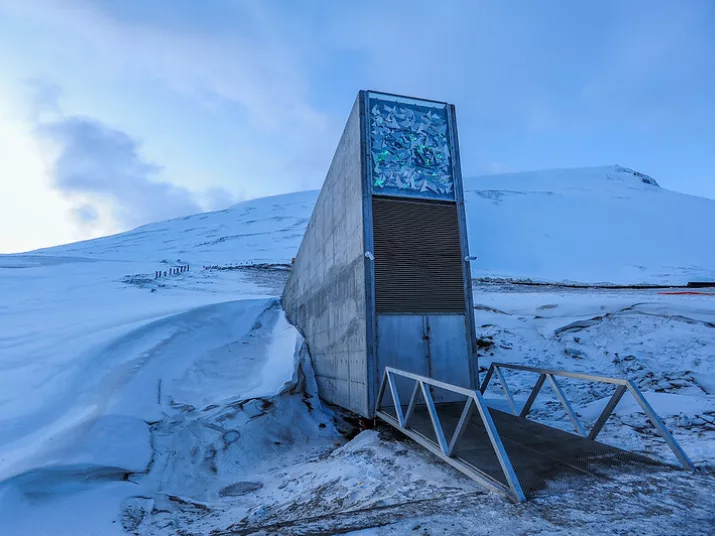
Photo: Neil Palmer/Crop Trust
Inside the Svalbard Global Seed Vault
A Safe Haven for the World's Seeds
Carved deep into a mountain on the remote Arctic archipelago of Svalbard lies one of humanity’s most extraordinary efforts to secure the future of life on Earth – the Svalbard Global Seed Vault. Often called the "Doomsday Vault," it is not designed for the end of the world, but for its survival. It is a global insurance policy safeguarding agriculture in times of crisis.

Photo: Neil Palmer/Crop Trust
More than 1.3 million seed samples are stored here, representing thousands of crop varieties cultivated over millennia. Each seed carries genetic traits essential for food production and climate adaptation – vital keys to solving future agricultural challenges.
The Seed Vault is owned by the Government of Norway and operated in partnership with the Norwegian Ministry of Agriculture and Food, NordGen, and the Crop Trust. Unlike a traditional gene bank, Svalbard functions solely as a secure backup repository, storing duplicate seeds from other, more conventional, gene banks worldwide. Its cold chambers see no permanent staff; only during deposit events do select personnel—including Seed Vault Coordinator Åsmund Asdal—visit to secure new arrivals.
Why Seeds Matter
Seeds are important because they are carriers of biological memory. Within their genomes lie adaptations to drought, disease, salinity, and extreme temperatures, as well as the code for different tastes and colors and nutritional value. As climate instability grows, access to this genetic reservoir is critical.
Yet the ancient landraces and wild relatives of modern crops where breeders can find these traits are often threatened by habitat loss and agricultural homogenization. Conserving them preserves a toolkit that humanity needs to adapt its food systems to new challenges.
How the Vault Operates
Svalbard is the final tier in a global three-level seed preservation system. National gene banks keep collections for use within the country by breeders, researchers and farmers, send duplicates to other national or international gene banks as a back-up, and deposit a third set in the Global Seed Vault for maximum security.
During the Syrian civil war, the international gene bank housed by ICARDA was forced to evacuate from Aleppo. Thanks to backups stored in Svalbard, its valuable seed collection from the oldest home of agriculture was safely regenerated and returned, a full-circle success illustrating the Vault’s vital purpose.
Seeds arrive sealed in aluminum pouches, packed into labeled boxes that remain the depositor’s property. Only the original owners can access their contents, emphasizing the Vault’s role as custodian, not collector. Not even Vault operators can open the boxes without permission.
Why Svalbard?
The location was chosen for its geological stability, deep permafrost, low humidity, and geopolitical neutrality. Even without refrigeration, natural cold preserves seeds for centuries.
Climate change, however, reached the Arctic too. In 2017, permafrost melt near the entrance required infrastructure upgrades. Yet the seed chambers deep inside remained safe, a testament to the Vault’s resilience.
A Global Commons
Over 100 countries have contributed seeds, making the Vault a powerful symbol of international cooperation beyond politics. Safety duplication in the Vault is recommended by the International Plant Treaty.
Preserving Tomorrow
“There’s a deep sense of relief and joy each time seed boxes arrive at the Svalbard Global Seed Vault from all around the world. The Vault symbolizes a powerful global commitment – nations coming together in peace to protect a shared resource essential for life.
Preserving genetic diversity in the Arctic is our insurance policy, securing the adaptability of crops and food security for generations to come,” says Stefan Schmitz, Executive Director of the Crop Trust.
Go on a tour!
Keen on checking out the vault? Go on a virtual tour! Click on the photo below and visit seeds from all over the world:
Photo: Svalbard Global Seed Vault/Riccardo Gangale